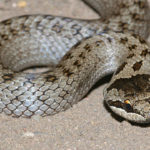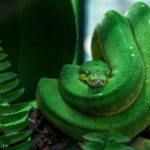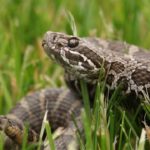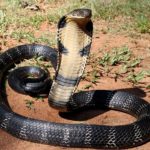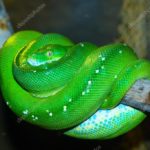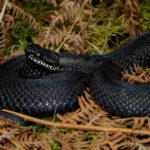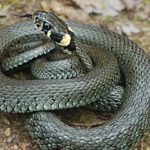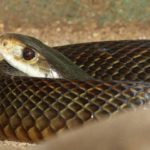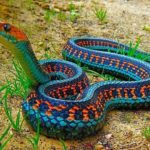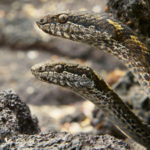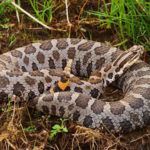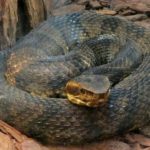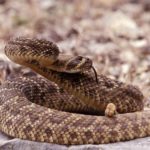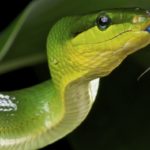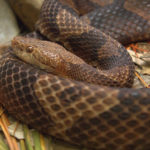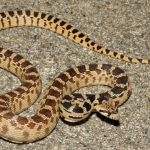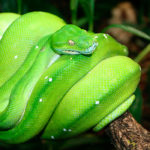Snakes
 Snakes are a very peculiar group of animals with unique anatomical, physiological and behavioral traits. Snakes constitute a separate suborder in the Squamous order. At first glance it is easy to distinguish them from lizards – by the presence or absence of limbs. But in fact, the lack of legs is not the main sign of the snake, there are also legless species of lizards, which are outwardly distinct from snakes. These reptiles have reached a huge variety – in the world there are 2500 kinds of snakes!
Snakes are a very peculiar group of animals with unique anatomical, physiological and behavioral traits. Snakes constitute a separate suborder in the Squamous order. At first glance it is easy to distinguish them from lizards – by the presence or absence of limbs. But in fact, the lack of legs is not the main sign of the snake, there are also legless species of lizards, which are outwardly distinct from snakes. These reptiles have reached a huge variety – in the world there are 2500 kinds of snakes!
The very name of the snake can be understood in two ways: in the broadest sense, snakes are called all the legless reptiles, but in the scientific community, snake groups with specific names are singled out – vipers, cobra, snakes, pythons, boas, shtomirders, slides, aspides, etc. Only a certain part of the species retained the scientific name “snake”. This article will deal specifically with such snakes in the narrow sense of the word, while other systematic subgroups will be covered separately.
The body of snakes is unusually elongated, its length can exceed the width and height by 10-1o times. Dimensions can vary from 10 cm to 5 m. The very shape of the body is not so monotonous as it may seem. In some species, the body can be shortened and thick, as though valcated, in others moderately long and broad, in the third very thin, and in sea snakes it is flattened from the sides like a ribbon. The head is triangular in shape, and the bones in the skull of the snake are very tightly connected. Especially elastic ligaments between the upper and lower jaws and … the left and right halves of each jaw (they are not connected snakes tightly).
Snakes have very peculiar senses: there are no external ears, so they are almost deaf, but snakes perfectly feel the slightest vibrations of the soil, which is often perceived by observers as the ability to “hear” steps; Sight is rather weak, snakes best see mobile prey; Taste as such they do not have at all – snakes do not distinguish the taste of food, and swallow it whole. But they have a perfectly developed sense of smell, and olfactory receptors are located not only in the nostrils, but also in the tongue. The language itself is very peculiar: it has a bifurcated end and receptors located at different ends, perceive the molecules of odor independently of each other. This allows the snake to accurately determine the position of the victim by smell, for the same reason the snakes constantly stick out the tongue, so they sniff.
Snakes are spread all over the globe, except for Antarctica. The vast majority of species occur in the tropics, in the temperate zone their number is very small. Poisonous species are also predominantly concentrated in the south. However, there are corners on the Earth, where there are no snakes at all – these are remote oceanic islands (Canary, Madeira, Polynesia, New Zealand). Snakes inhabit all kinds of landscapes: forests, mountains, steppes, deserts, swamps, open seas and oceans.
Different species occupy different ecological niches, for example, in the forest, snakes can live in forest litter or in tree crowns. All kinds of snakes are single animals that form clusters only during mating or wintering. Activity of different species is different: most prefer to hunt in the daytime, but there are active snakes in the twilight (mostly wood species), southern snakes are active all year round, the temperate zone for the winter is hibernating.
The ways of moving snakes are very diverse. Most species crawl wave-wise bending the body, while the speed can reach 3-15 km / h. All kinds of snakes also perfectly climb on uneven surfaces (branches, trunks, stones). Snakes can make short throws (when attacking, for example), are able to burrow into the ground or sand (only desert species). The most unusual way to travel is with an efa. This snake bends the body perpendicular to the direction of motion, so it creeps sideways. The manner of hunting can also be different. Many species prefer to sit in an ambush motionlessly or slowly creep toward the victim crawling. Some are actively exploring the surroundings on the run attacking the creeping prey. In any case, the attack ends with a sharp throw and a bite, after which the snake … releases the victim. Without limbs, she can not kill prey instantly and relies on the strength of her poison. And he acts perfectly, usually the victim manages to escape only a few meters, after which the snake finds the paralyzed animal by smell and swallows it. When caught, some snakes help themselves, twisting the prey with the rings of their body.
All snakes are absolute predators and feed exclusively on animals, but different species specialize in different prey. Small snakes eat only insects and small vertebrates (rodents, frogs, lizards), large ones can hunt rabbits, ungulates, sea snakes prey on fish, and wood species prefer birds. A number of species have a very narrow food specialization, for example, collar snakes eat exclusively mollusks, and royal snakes prefer to attack … snakes!
